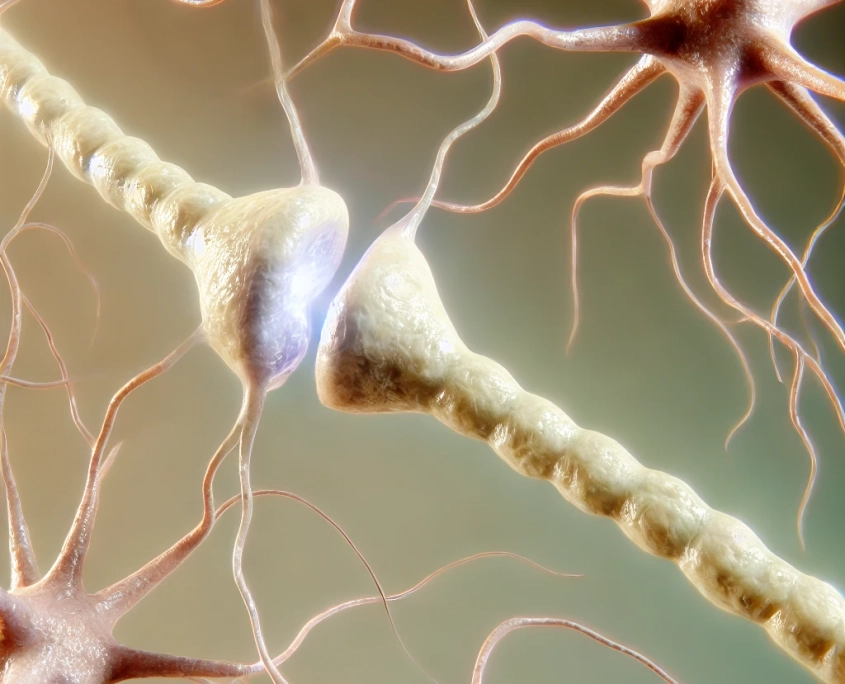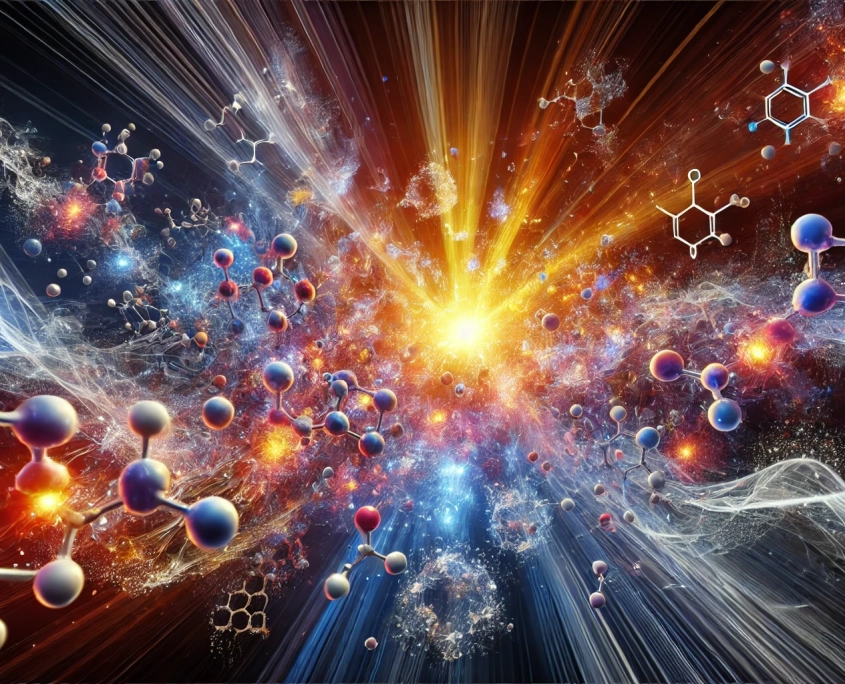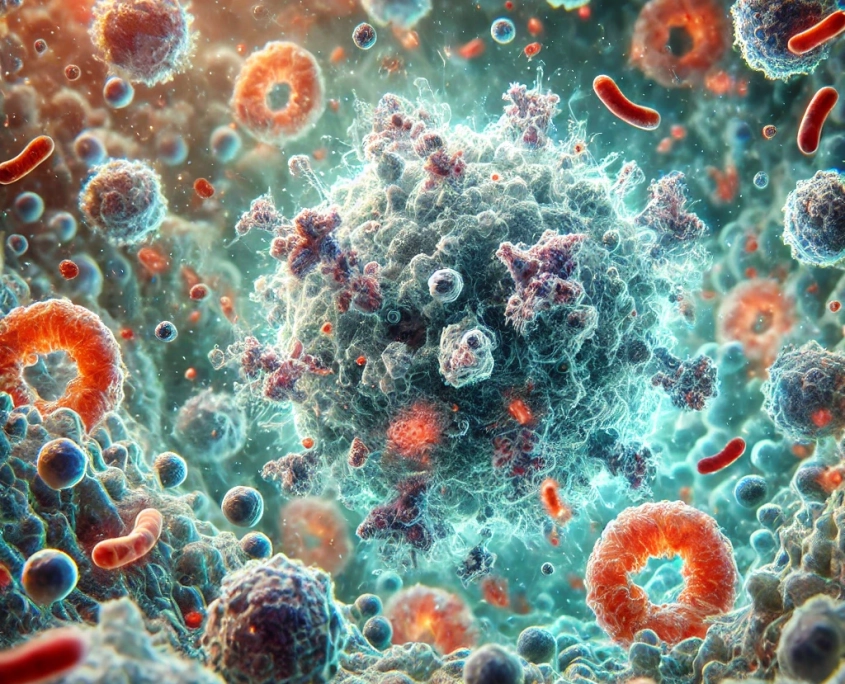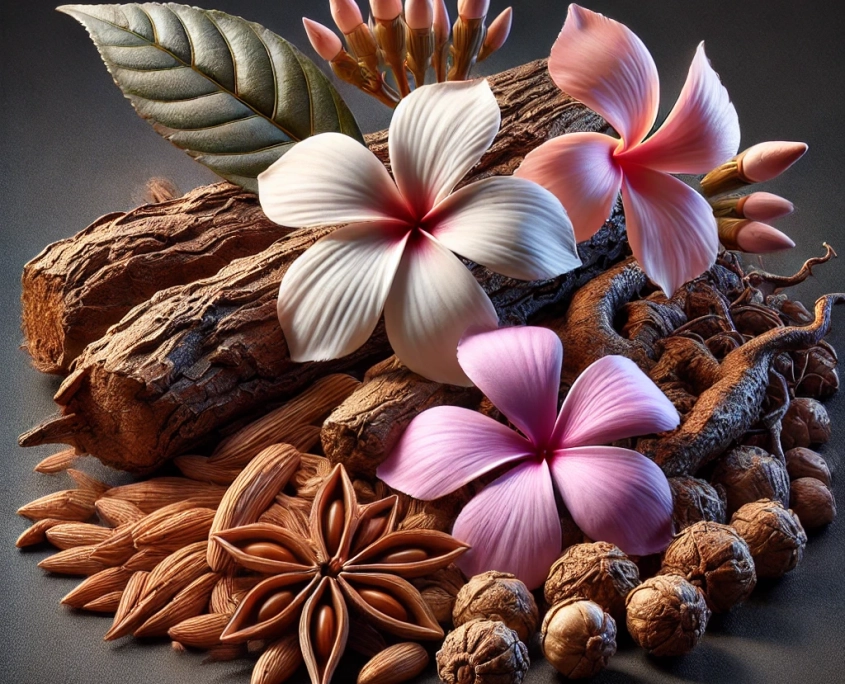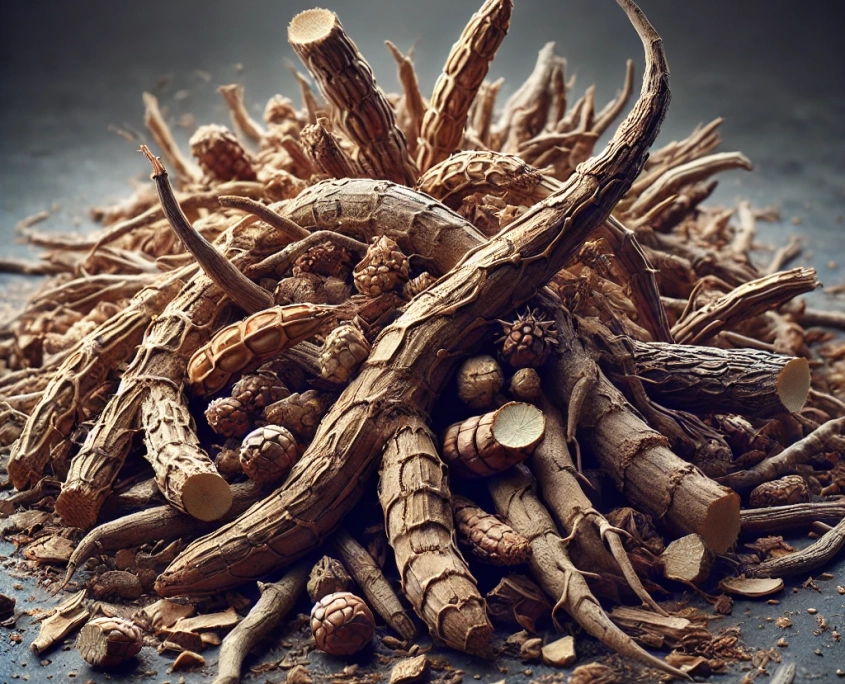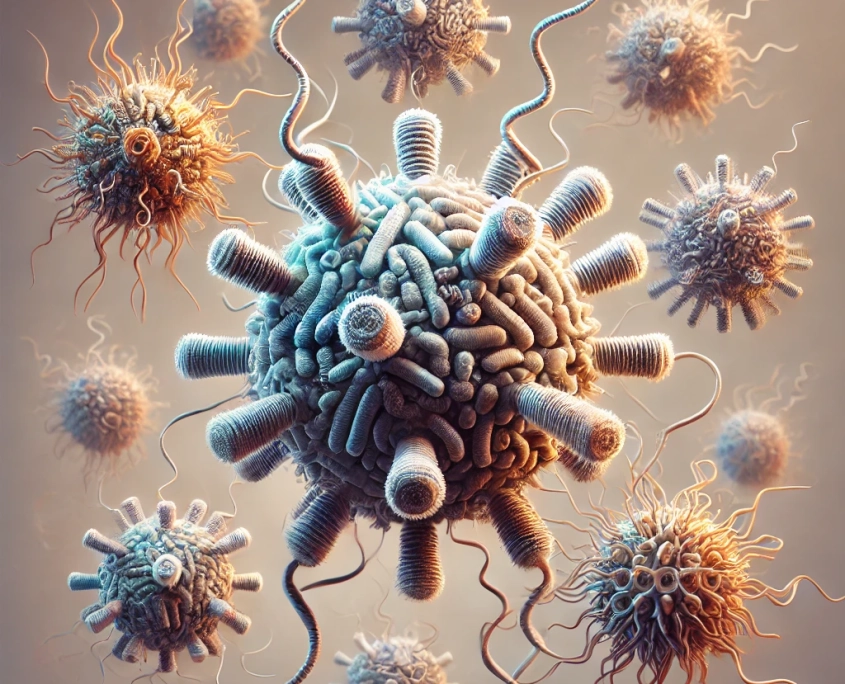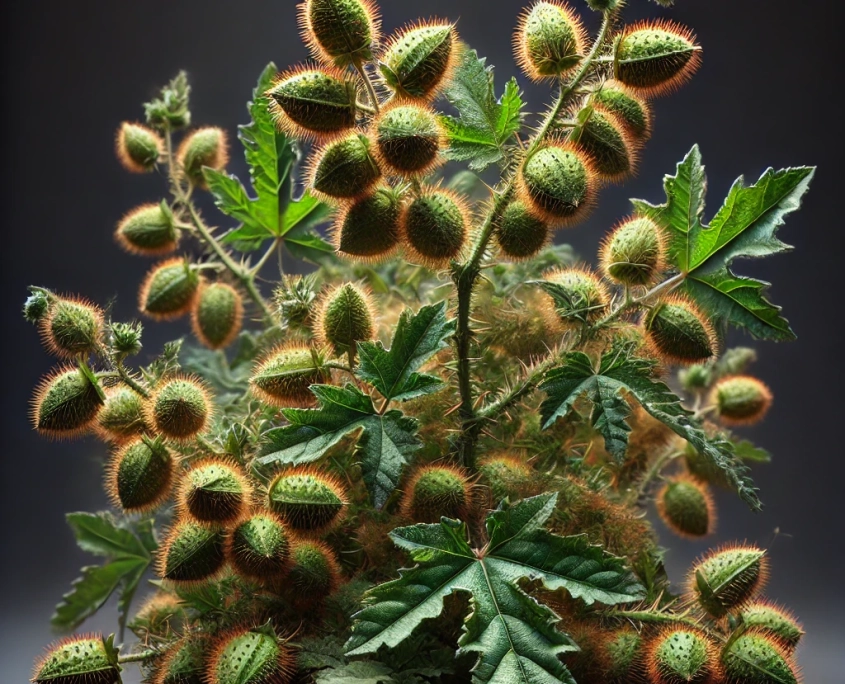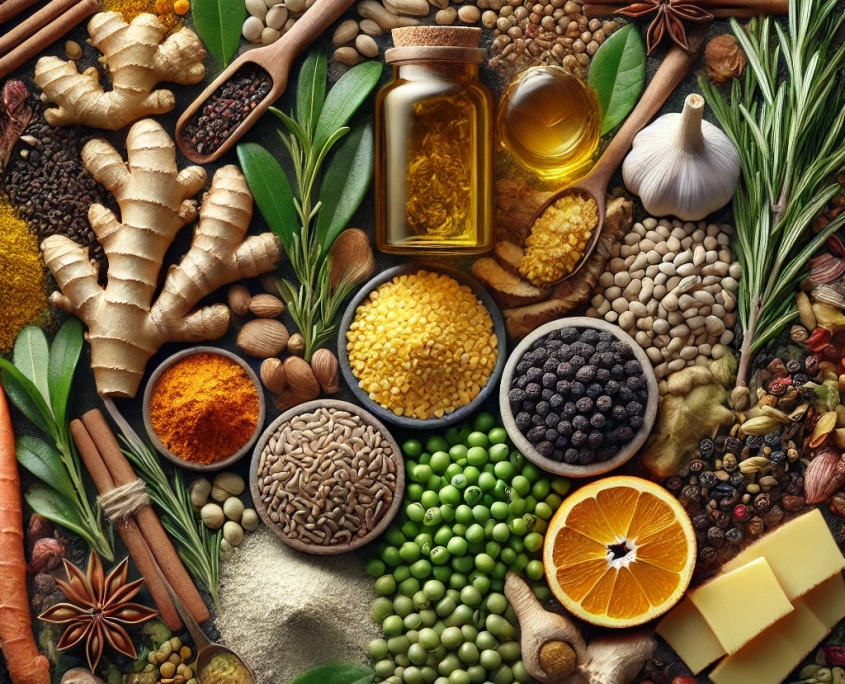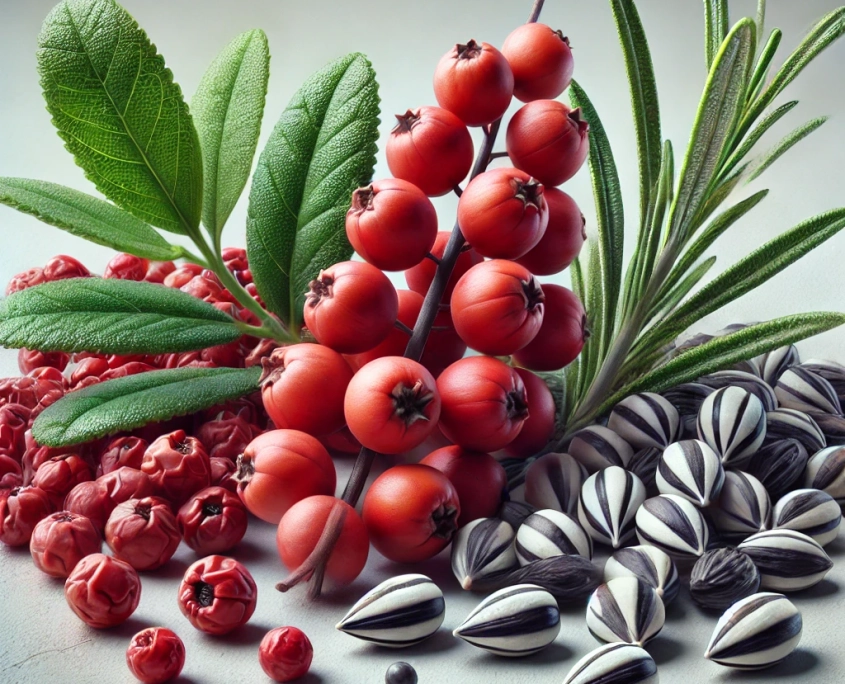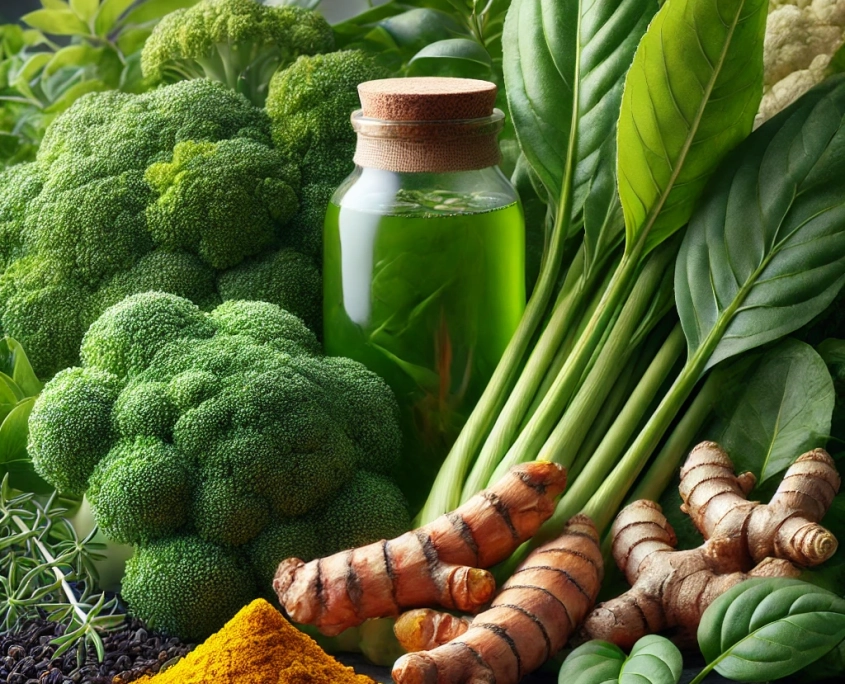
The modern-day environment presents an array of challenges to the human body, from oxidative stress to environmental toxins. The body’s natural defense mechanisms, including antioxidant and detoxification pathways, are crucial for maintaining cellular integrity and overall health. Central to these defense systems is the Nrf2 (Nuclear factor erythroid 2–related factor 2) pathway, a transcription factor that plays a pivotal role in regulating the expression of antioxidant and detoxifying enzymes. Nrf2 activation is essential in combating oxidative stress, supporting detoxification, and modulating inflammatory responses.
Cytokine Balance, a formula by Xymogen, is specifically designed to activate the Nrf2 pathway, thereby enhancing the body’s natural antioxidant and detoxification capabilities. This paper provides an in-depth analysis of the key ingredients in Cytokine Balance, including Turmeric (Curcuma longa), Green Tea (Camellia sinensis), Glucoraphanin (derived from broccoli extract), and trans-Pterostilbene, and their roles in promoting Nrf2 activation, antioxidant support, and detoxification.
1. Curcuma longa (Turmeric)
Botanical Overview: Curcuma longa, commonly known as turmeric, is a perennial herbaceous plant belonging to the ginger family (Zingiberaceae). It is native to Southeast Asia, primarily India, and has been used for centuries in traditional medicine systems, including Ayurveda and Traditional Chinese Medicine (TCM). Turmeric is well-known for its vibrant yellow color, attributed to its active compounds called curcuminoids.
Active Compounds: The primary active compounds in turmeric are curcuminoids, with curcumin being the most studied and biologically active. Curcumin makes up approximately 2-8% of most turmeric preparations. It is a polyphenolic compound with potent anti-inflammatory, antioxidant, and antimicrobial properties. Additionally, turmeric contains other bioactive compounds, such as demethoxycurcumin, bisdemethoxycurcumin, and volatile oils like turmerone, atlantone, and zingiberene, which contribute to its therapeutic effects.
Health Benefits: Curcumin, the star component of turmeric, is highly regarded for its ability to modulate the Nrf2 pathway, a critical player in cellular defense mechanisms. By activating Nrf2, curcumin upregulates the expression of various antioxidant and detoxifying enzymes, including heme oxygenase-1 (HO-1) and glutathione S-transferase. This action helps to neutralize free radicals, reduce oxidative stress, and support the body’s detoxification processes. Curcumin’s anti-inflammatory properties also make it valuable in managing chronic inflammatory conditions, such as arthritis, cardiovascular diseases, and metabolic disorders.
2. Camellia sinensis (Green Tea)
Botanical Overview: Camellia sinensis, the plant species from which green tea is derived, is a small evergreen shrub native to East Asia. Green tea has been consumed for thousands of years for its health-promoting properties and is particularly rich in polyphenols, especially catechins, which are the main bioactive compounds responsible for its beneficial effects.
Active Compounds: The most abundant and potent catechin in green tea is epigallocatechin-3-gallate (EGCG), which has powerful antioxidant, anti-inflammatory, and chemoprotective properties. Other catechins found in green tea include epicatechin, epicatechin gallate, and epigallocatechin, which together enhance the tea’s health benefits.
Health Benefits: EGCG is a key modulator of the Nrf2 pathway, contributing to the regulation of cellular defense mechanisms. By activating Nrf2, EGCG upregulates the expression of detoxifying enzymes such as glutathione S-transferase and superoxide dismutase (SOD), enhancing the body’s ability to combat oxidative stress. Additionally, EGCG has been shown to inhibit the activation of nuclear factor-kappa B (NF-κB), a transcription factor involved in the inflammatory response. This dual action of promoting antioxidant activity and suppressing inflammation makes green tea an essential component of the Cytokine Balance formula.
3. Glucoraphanin (from Broccoli Extract)
Botanical Overview: Glucoraphanin is a naturally occurring glucosinolate found in cruciferous vegetables, particularly broccoli. It is the precursor to sulforaphane, a potent inducer of phase II detoxification enzymes. Broccoli, native to the Mediterranean region, has long been celebrated for its health benefits, largely attributed to its high concentration of glucosinolates.
Active Compounds: Glucoraphanin, upon ingestion, is converted into sulforaphane through the action of the enzyme myrosinase, which is either present in the plant or produced by gut bacteria. Sulforaphane is a potent activator of the Nrf2 pathway, leading to the induction of a wide range of antioxidant and detoxification enzymes.
Health Benefits: Sulforaphane, derived from glucoraphanin, is one of the most potent activators of the Nrf2 pathway. It promotes the expression of phase II detoxification enzymes, such as glutathione S-transferase, NAD(P)H oxidoreductase 1 (NQO1), and heme oxygenase-1 (HO-1). These enzymes play a crucial role in neutralizing reactive oxygen species (ROS) and facilitating the elimination of toxins. Additionally, sulforaphane has been shown to have anti-inflammatory properties, making it a valuable agent in reducing the risk of chronic diseases associated with inflammation and oxidative stress.
4. trans-Pterostilbene
Botanical Overview: Pterostilbene is a naturally occurring polyphenol and a derivative of resveratrol, found in small amounts in blueberries, grapes, and the heartwood of the Indian kino tree (Pterocarpus marsupium). It is chemically similar to resveratrol but has better bioavailability due to the presence of two methoxy groups that make it more lipophilic.
Active Compounds: The primary active compound is pterostilbene, which is known for its antioxidant, anti-inflammatory, and neuroprotective properties. It has been studied for its potential to modulate gene expression related to oxidative stress and inflammation.
Health Benefits: Pterostilbene plays a significant role in the activation of the Nrf2 pathway, enhancing the expression of antioxidant enzymes such as SOD, catalase, and glutathione peroxidase. This modulation helps in reducing oxidative stress and protecting cells from damage caused by free radicals. Pterostilbene also exhibits anti-inflammatory effects by inhibiting the NF-κB pathway, which reduces the production of pro-inflammatory cytokines. Its neuroprotective properties further contribute to cognitive health, making it a valuable component of the Cytokine Balance formula.
The Cytokine Balance formula is a comprehensive approach to supporting the body’s natural antioxidant and detoxification pathways. Through the activation of the Nrf2 pathway, the ingredients in this formula, including Curcuma longa, Camellia sinensis, Glucoraphanin, and trans-Pterostilbene, work synergistically to enhance the body’s defense mechanisms against oxidative stress and inflammation. The inclusion of these potent bioactive compounds in a single formula provides a powerful tool for promoting cellular health, reducing the risk of chronic diseases, and supporting overall well-being.
This paper highlights the importance of each ingredient in the Cytokine Balance formula and underscores the critical role of Nrf2 activation in maintaining optimal health. By modulating key pathways involved in oxidative stress and inflammation, Cytokine Balance offers a targeted approach to enhancing the body’s resilience to environmental and physiological stressors.
References:
- Paunkov A, Chartoumpekis DV, Ziros PG, et al. Antioxidants. 2019 Sep 1;8(9): E353. doi:10.3390/antiox8090353.
- Xue EX, Lin JP, Zhang Y, et al. Oncotarget. 2017 Jun 27;8(26):41988-42000. doi: 10.18632/oncotarget.16716.
- Keum YS. Ann N Y Acad Sci. 2011 Jul;1229:184-9. doi:10.1111/j.1749-6632.2011.06092.x.
- Houghton CA, Fassett RG, Coombes JS. Oxid Med Cell Longev. 2016;2016:7857186. doi:10.1155/2016/7857186.
- Kosuru R, Rai U, Prakash S, et al. Eur J Pharmacol. 2016 Oct 15;786:229-243. doi:10.1016/j.ejphar.2016.07.046.
- Bhakkiyalakshmi E, Dineshkumar C, Karthik S, et al. Bioorg Med Chem. 2016 Aug 15;24(16):3378-86. doi:10.1016/j.bmc.2016.05.011.
- Kim J, Lee HJ, Lee KW. J Neurochem. 2010 Mar;112(6):1415-30. doi:10.1111/j.1471-4159.2009.06562.x.
- Aggarwal BB, Harikumar KB. Int J Biochem Cell Biol. 2009 Jan;41(1):40-59. doi:10.1016/j.biocel.2008.06.010.
- Antony B, Merina B, Iyer VS, et al. Indian J Pharm Sci. 2008 Jul-Aug;70(4):445-9. doi:10.4103/0250-474X.44591.
- Pugazhenthi S, Akhov L, Selvaraj G, et al. Am J Physiol Endocrinol Metab. 2007 Sep;293(3). doi:10.1152/ajpendo.00111.2007.
- Farzaei MH, Zobeiri M, Parvizi F, et al. Nutrients. 2018 Jul 1;10(7):855. doi:10.3390/nu10070855.
- Singh BN, Shankar S, Srivastava RK. Biochem Pharmacol. 2011 Dec 15;82(12):1807-21. doi:10.1016/j.bcp.2011.07.093.
- Zhang ZM, Yang XY, Yuan JH, et al. Chin Med J (Engl). 2009 Jul 20;122(14):1669-75. doi:10.3760/cma.j.issn.0366-6999.2009.14.011.
- Na HK, Kim EH, Jung JH, et al. Arch Biochem Biophys. 2008 Aug 15;476(2):171-7. doi:10.1016/j.abb.2008.04.003.

